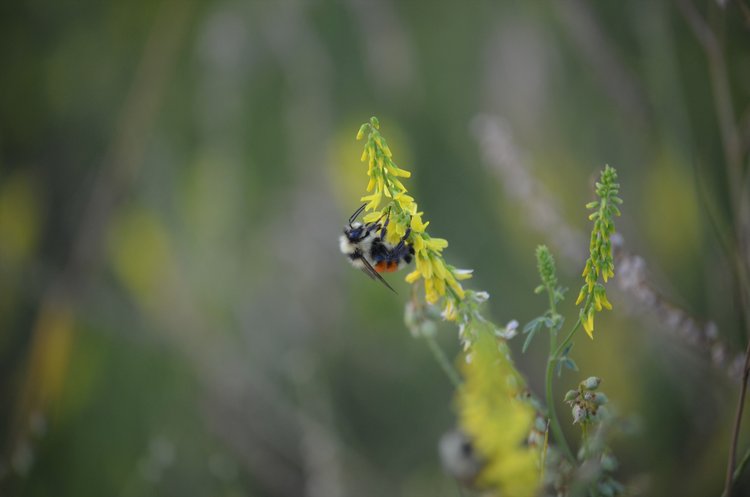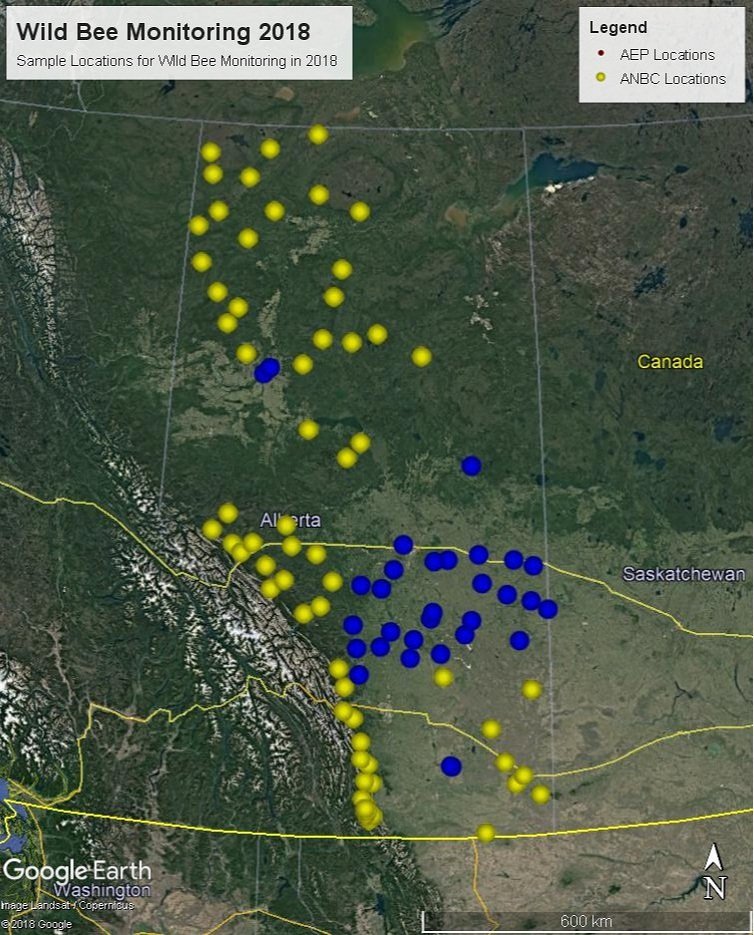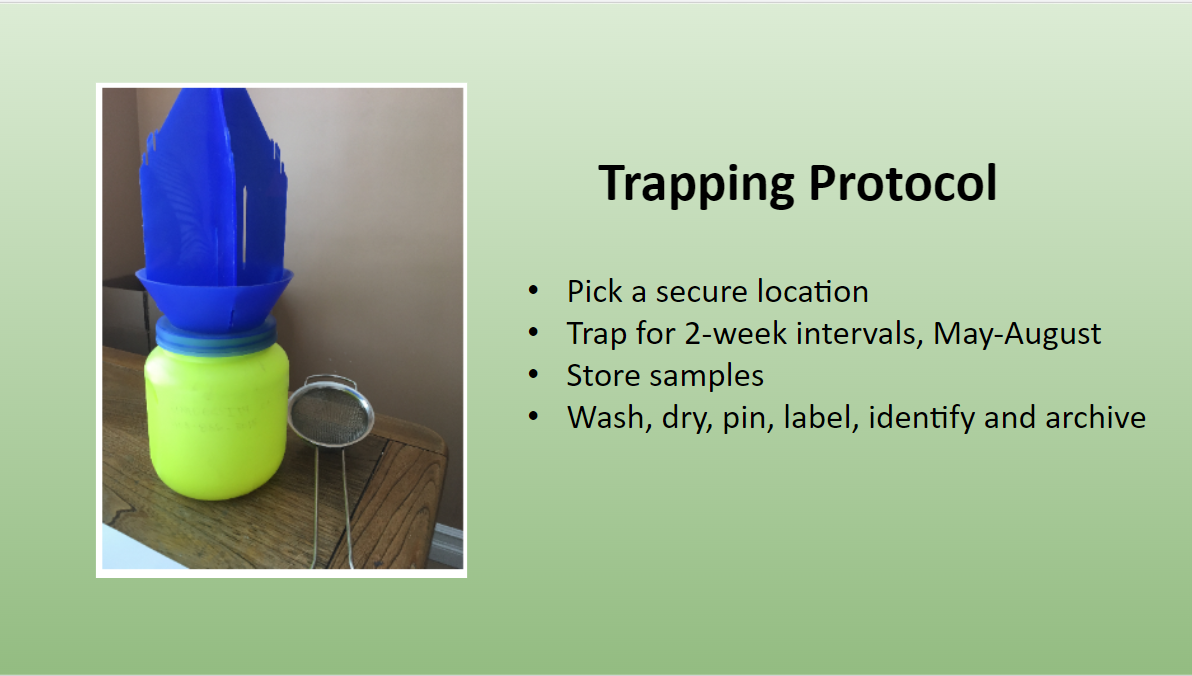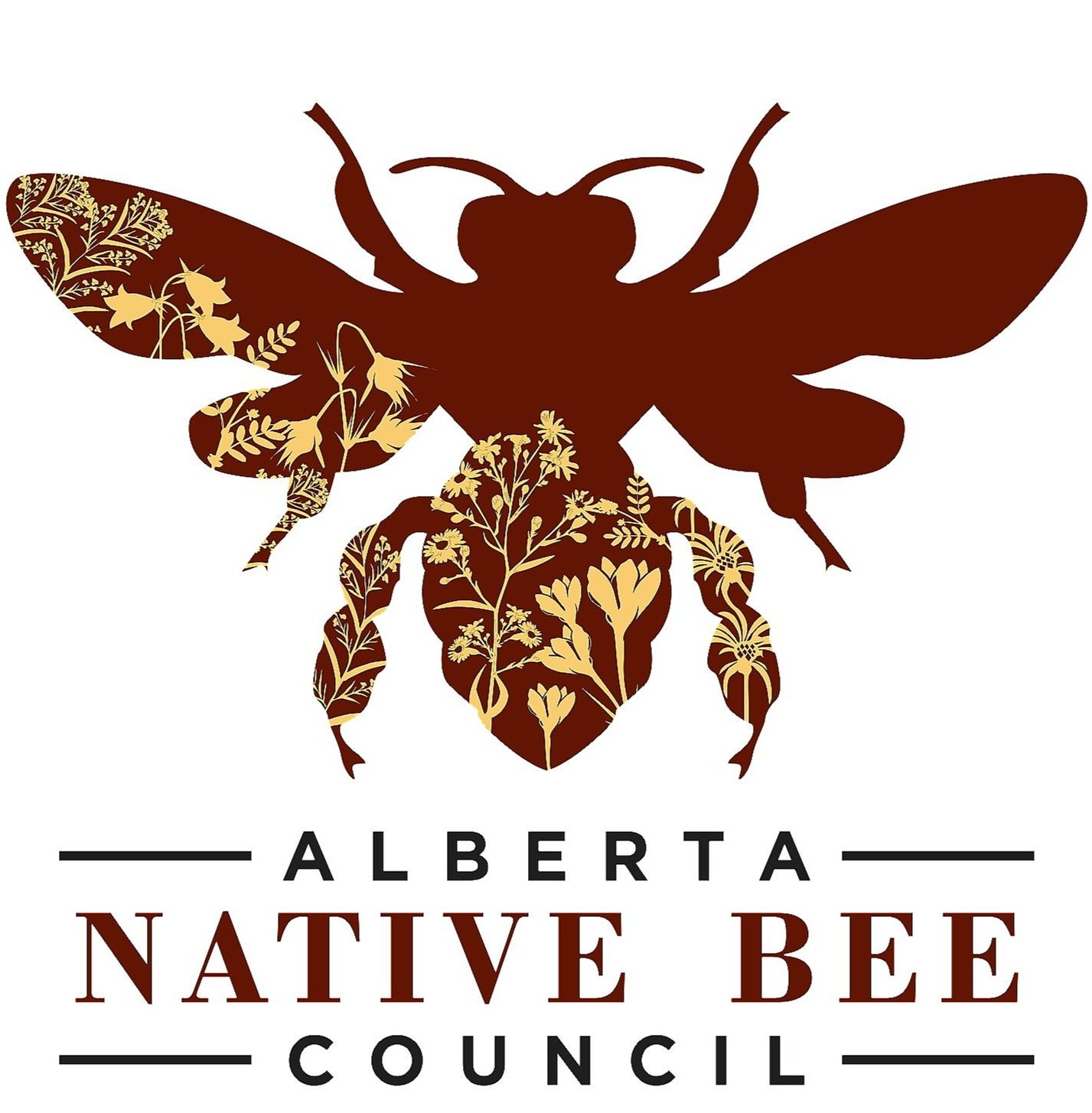
Provincial Native Bee Monitoring Program
According to the Government of Canada’s Wild Species Status Report, one quarter of native bees in Alberta are unable to be assigned a conservation status assessment due to a lack of data. To address these data deficiencies and to gather more information about all of our other native bee species, the Alberta Native Bee Council and partners implements province-wide routine, strategic monitoring of native bees.
Native bees are sampled by volunteers for two-week periods on and off throughout the growing season (i.e., May to September) using blue vane traps (passive samplers). At the end of the season the samples are collected and bees are processed for identification. This program is intended to be an ongoing, long-term monitoring program with data collected every five to ten years.
Project Objectives:
Collect valuable baseline data.
Compile a comprehensive list of bumble bee species collected broken down by subregion.
Create range maps for all bumble bee species collected through the program.
Provide an overview of the relative abundance of bumble bee species in Alberta.
Provide information on the distribution of bee species of conservation concern to facilitate species recovery efforts.
Compile a comprehensive list of all bee species collected broken down by subregion.
Create range maps for all bee species collected through the program.
Provide an overview of the relative abundance of all bee species in Alberta.
Create reference collections showing native bee diversity to provide to organizations for educational purposes.
Create an identification guide to the bumble bees of Alberta broken down by subregion or other regional jurisdictions.
Conduct assessments of landscape-level impacts on native bee populations (e.g., how do bee populations differ when surrounded by different types of land-cover and different types of disturbance?, etc.)
Assess changes to bee populations over time by comparing these results to future monitoring efforts.
The 2018 Monitoring Program
Results of the 2018 monitoring program:
The 2018 monitoring program was used to inform the creation of the Guide to the Bumble Bees of Central Alberta. Data from the monitoring program was used to update the guide with information such as:
Which species occur where
What color variations are most common
Species found north of the Southern Prairies
This project would not have been possible without the support and contributions of numerous partners. These include, the University of Calgary, Alberta Agriculture and Forestry, Alberta Environment and Parks, The University of Alberta, efforts from numerous individual volunteers, financial contributions from the Alberta Conservation Association and the Alberta EcoTrust Foundation. We are very grateful to all of these organizations and individuals.
Images from the 2018 monitoring program:




The 2024 Monitoring Program
The 2024 Monitoring program has expanded it’s capacity to with the help of 49 sampling partners, resulting in ~150 traps deployed across Alberta. Collaboration with sampling partners has allowed us to have a strong focus on understudied regions.
Our partners include:
Alberta Biodiversity Monitoring Institute
Alberta Forestry and Parks
The Association of Alberta Agricultural Fieldmen
Watershed Planning and Advisory Councils
Applied Research Associations
Elk Island National Park
Individual citizen scientists
2024’s monitoring program includes the piloting of new monitoring protocols to standardize monitoring for native bees, as well as the trail and use of DNA-barcoding to simplify identification. Processing of specimens is ongoing. This innovative monitoring program is not only filling critical knowledge gaps today, but shaping the direction of native bee conservation in Alberta for decades to come.
The 2024 monitoring program would not have been possible without the support and contributions of numerous partners. We’d like to give a special thanks to our funders including the Alberta Biodiversity Monitoring Institute, Alberta Ecotrust, and Environment and Climate Change Canada.




